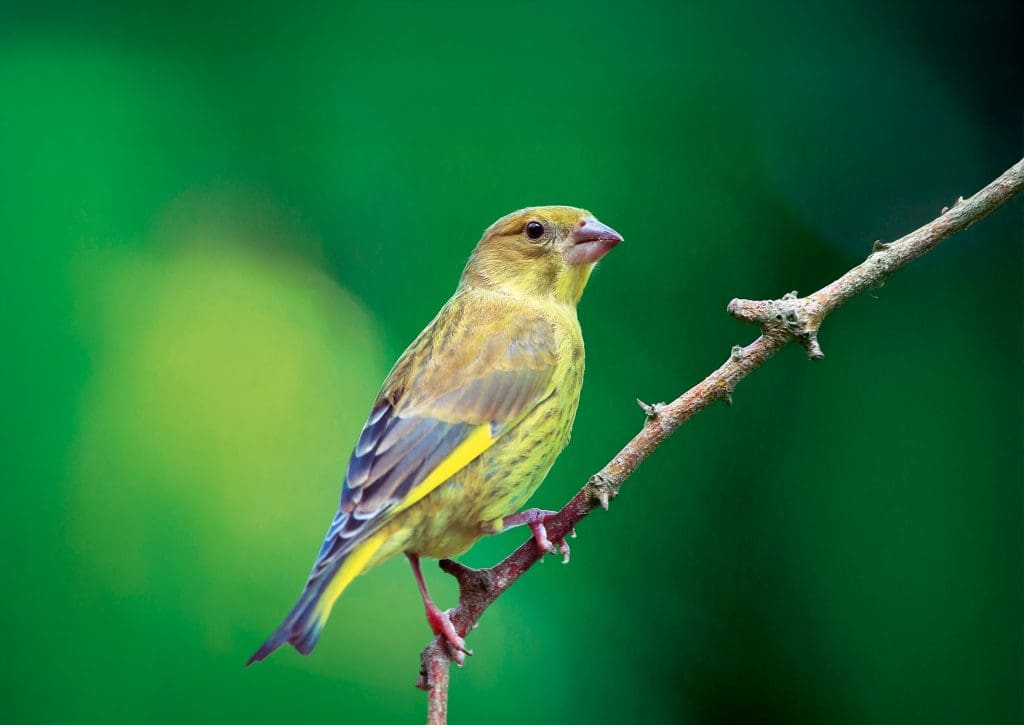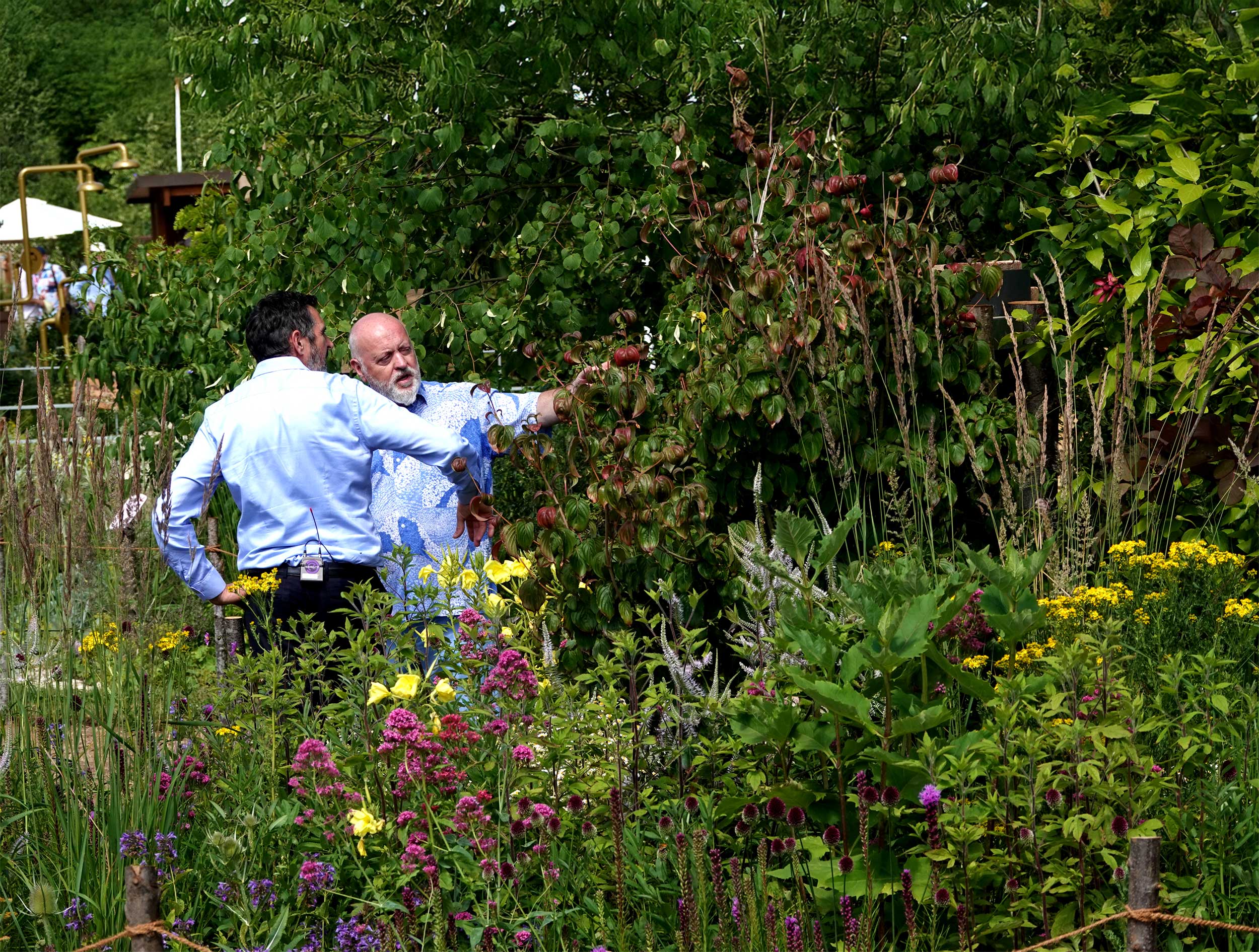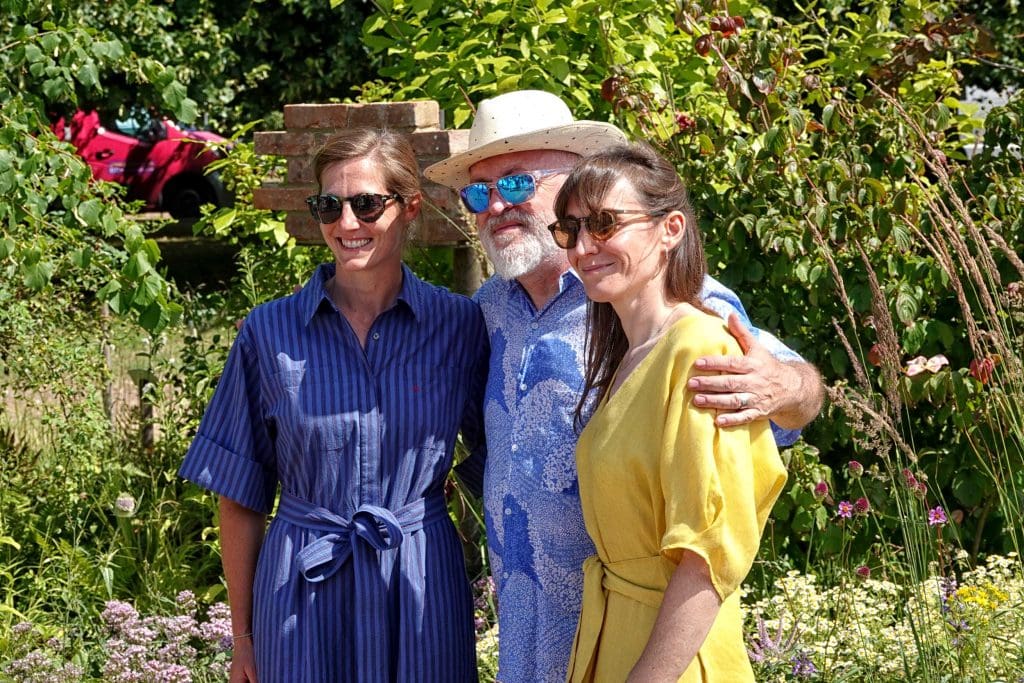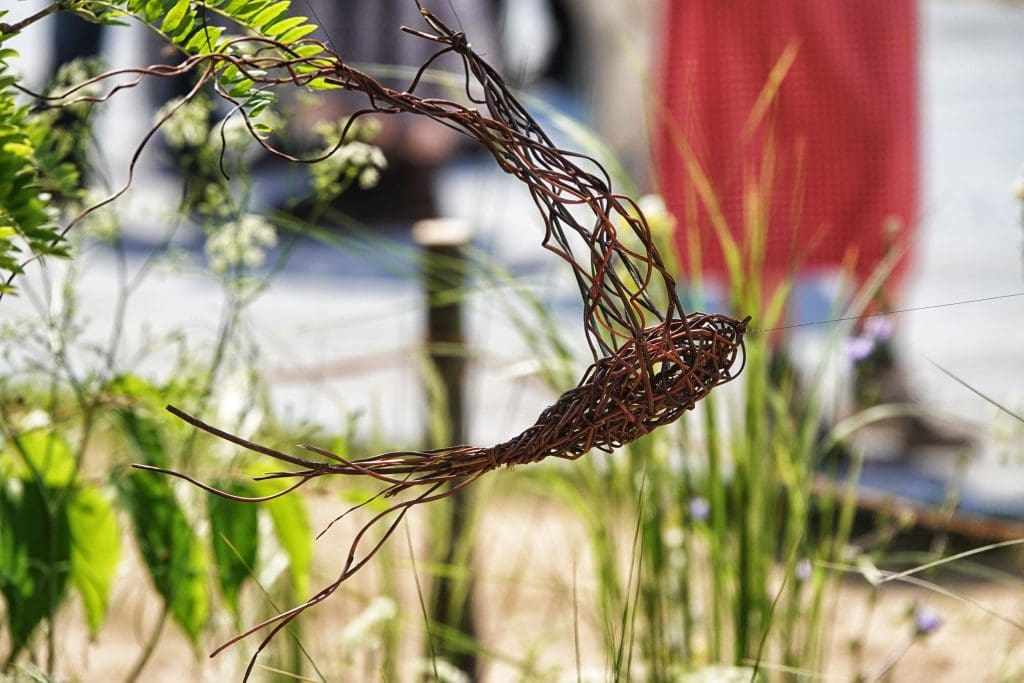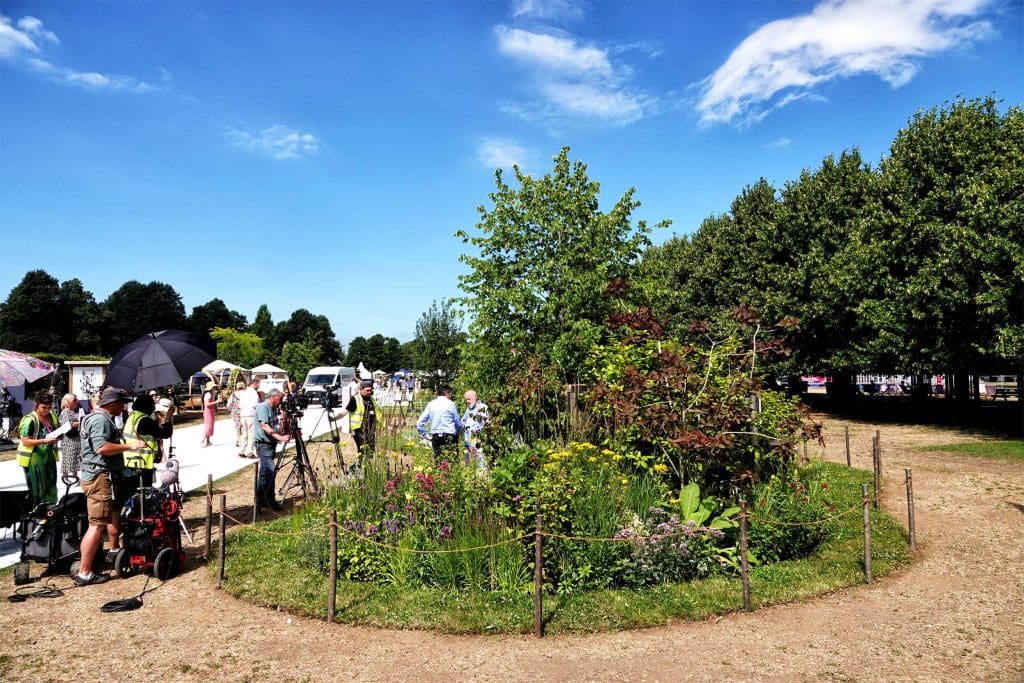Birds have been an important part of Bill Bailey’s life since childhood, and one bird has always held a particular fascination – the Swift.
So, it seemed a natural fit when Bill agreed to help launch a special RSPB/RHS feature garden at this year’s RHS Hampton Court Flower Show, one that would celebrate Swifts, draw attention to their plight, and inspire as many people as possible to aid their recovery.
But how do you create a garden for Swifts? After all, their lives are spent in the open skies, not pecking in lawns.
That was the creative challenge facing garden designer Lilly Gomm and horticulturalist Coralie Thomas. They had just six months to pull something out of the bag when most show gardens take well over a year!
There were two key themes they had to draw together. One is the fact that Swifts nest in holes in buildings, so the garden featured a range of what Lilly called ‘fragments’, demonstrating a range of Swift bricks and boxes. Interpretation helped ensure that visitors understood that, in reality, these need to be elevated five metres or more.
‘The garden allowed Bill to share the sobering message of the decline of the Swift, but it also reminds us of the simple things we can all do that will collectively make a difference’
The second was that the actual garden element is important, too, showing how creating habitats for garden birds and other wildlife can also help Swifts. After all, their aerial diet has its origins down at ground level.
Lilly and Coralie’s design also nodded to the range of habitats and locations that Swifts pass over on their astonishing migration, using over 1,600 plants to create a colourful but natural space.
With no hard landscaping and all plants grown peat- and pesticide-free, the garden had as little environmental footprint as possible. After the show, the plants were relocated just a few miles down the road where the charity Balance manages a community garden for adults with disabilities.
I grabbed some time with Bill to discover more about his Swift passion. “Their arrival and departure reminds us of the rhythm of nature,” he said. “When I see them, I think that all is well, despite the turmoil in this world. Oh, and of course they are beautifully aerodynamic – it makes them wonderful to draw.”
The garden allowed Bill to share the sobering message of the decline of the Swift. “But it also reminds us of the simple things we can all do that will collectively make a difference,” he enthused.
This message reached thousands of visitors, plus BBC Gardeners’ World, national newspapers, magazines and podcasts. Our thanks to the RHS for the chance to collaborate and to Henry Kenner at Action for Swifts who supplied the boxes and put in an incredible shift at the show. It was a wonderful way of helping put Swifts centre-stage.
Bill shares his top three favourite things about the Swift garden.
Top 3 tips from the Swift Garden
- The adage of ‘right plant, right place’ ran throughout the garden. Mediterranean plants occupied the sunniest, driest aspects; bright perennials filled sunny spots on richer soils, and shade-loving plants enjoyed the space under the trees. In the right places, plants are happy, meaning less work for you.
- Don’t be afraid of shade in a garden. Yes, many insects like it tropical when they are flying about looking for nectar and pollen, but their caterpillars or larvae often like cover. And in hot weather, the shade is what you are likely to make a beeline for, too!
- Fill your space with plants. All that green is so restful on the eye, and plants thrive when they are together in communities.
Creating a border of herbaceous perennials
Lilly and Coralie created beautiful borders in the Swift Garden, mainly using herbaceous perennials – plants that come back year after year, but whose top growth dies down for the winter. Many of these plants bulk up and spread over time, making it a cheap and time-saving way to garden.
The simplest way to set out a perennial border is to split the bed into blocks, growing one type of perennial within each. This creates visual impact, and you know exactly what should – and shouldn’t – be growing in each.
Because perennial plants have well-established root systems, they often require little watering, if any. Choosing plants with known wildlife value, such as catmints, globe thistles, Michaelmas daisies, scabiouses and heleniums, will transform your flowerbeds into real nature hotspots.
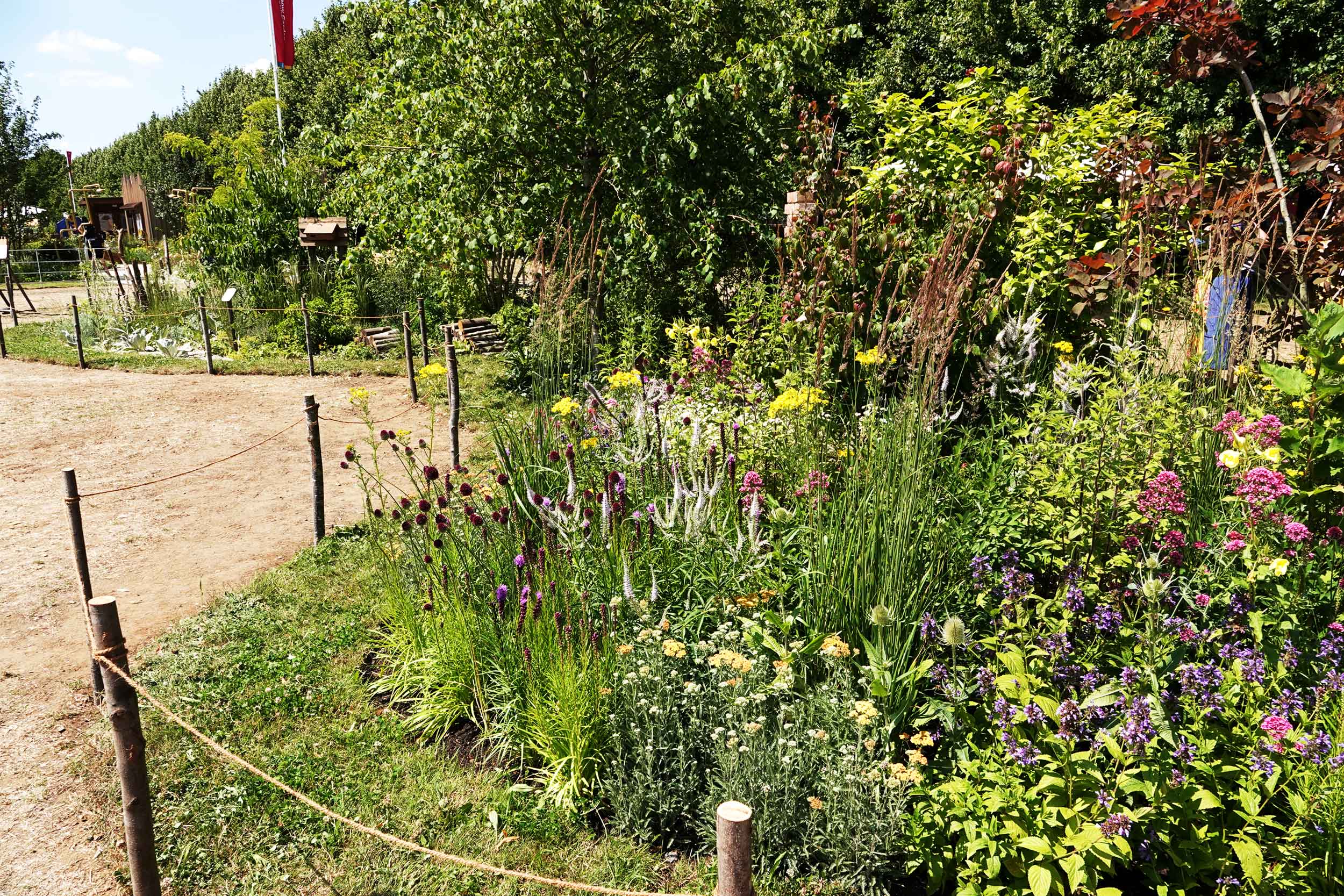
Transform your flower beds by planting perennials. Photo: Adrian Thomas
How to…
Install Swift boxes
Prepare to welcome Swifts back from April
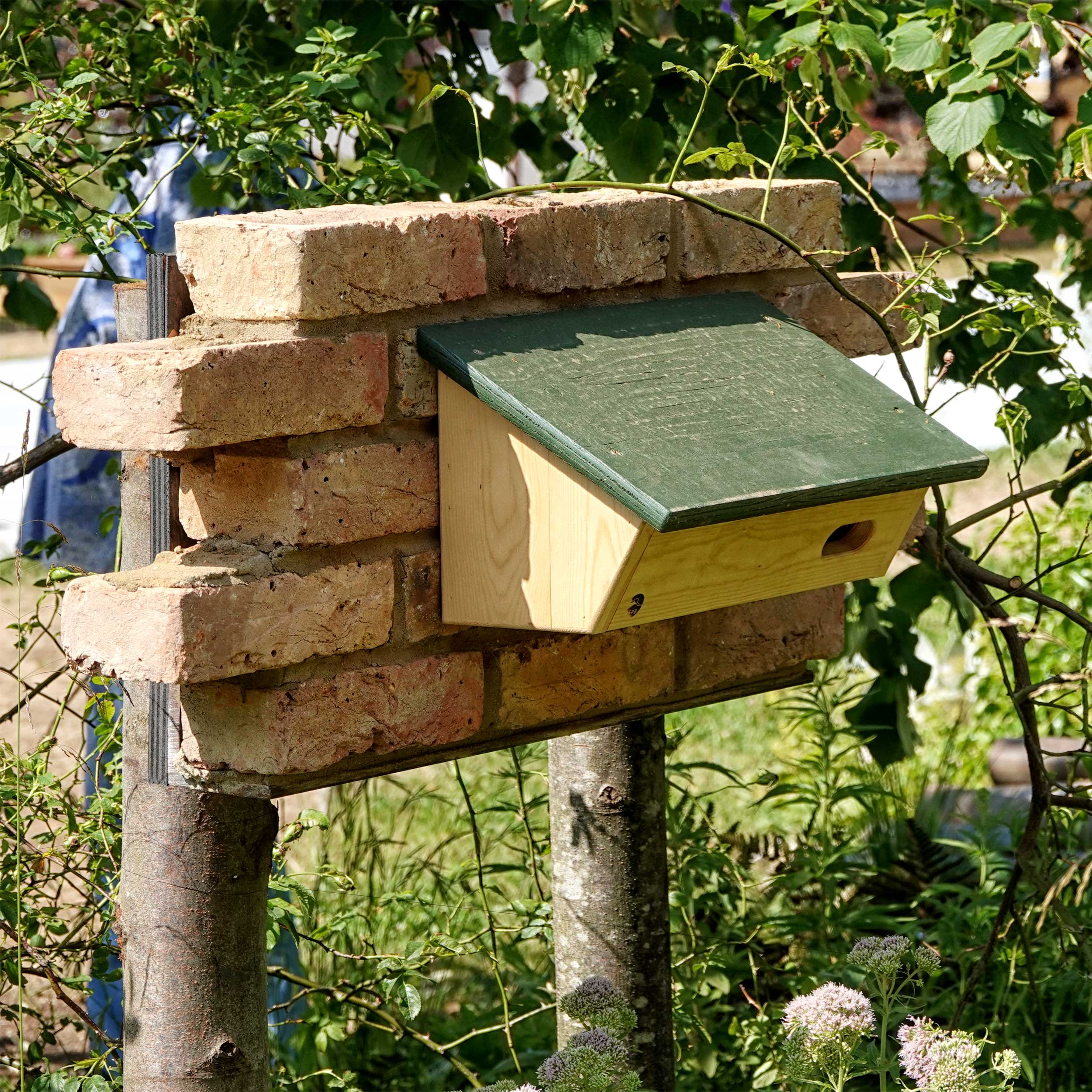
A Swift box, such as the RSPB model, needs to be installed on a wall, ideally under the eaves, at least 5 metres up. It needs a clear flight line in and should face between north-west and north-east. Additional boxes can be added one metre apart.
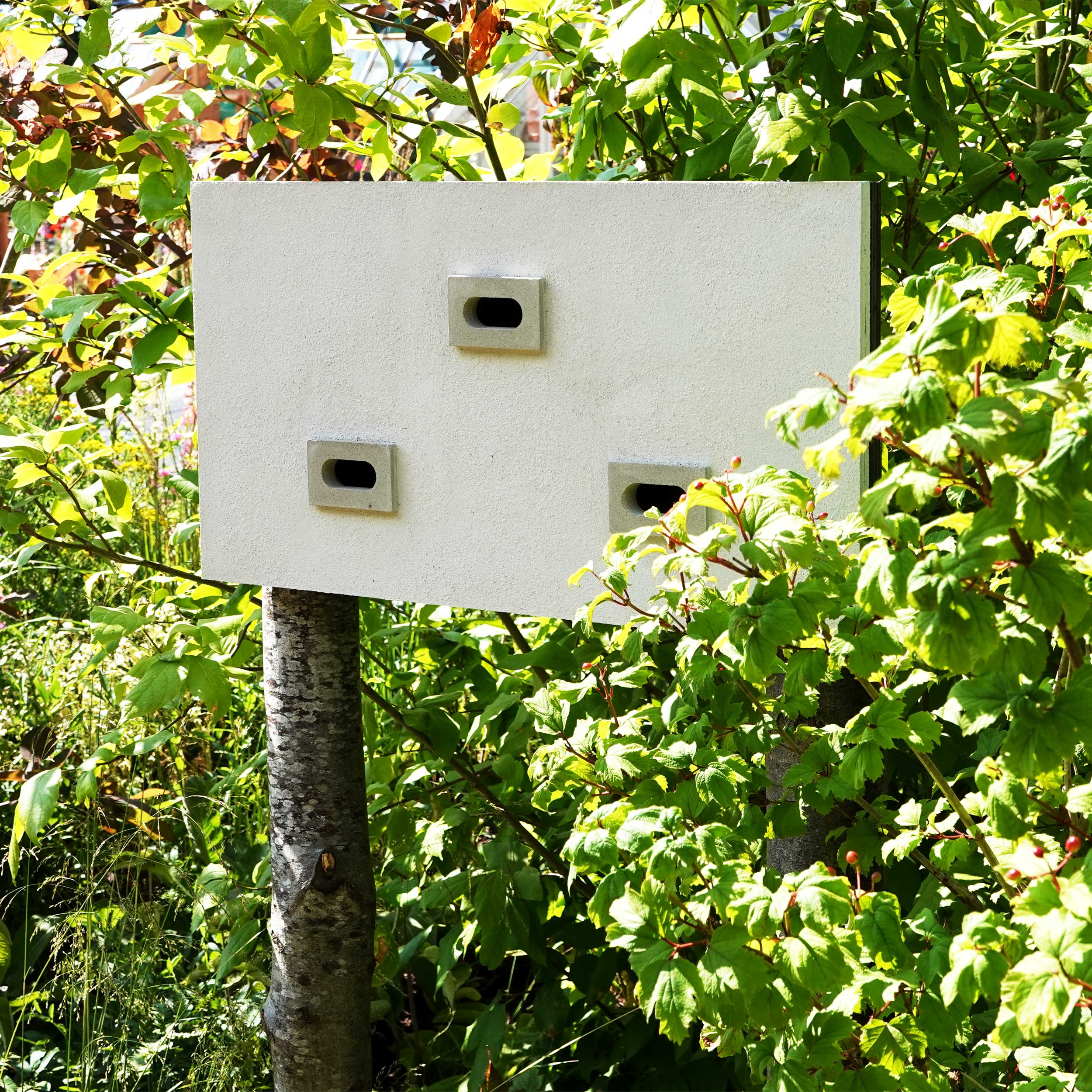
Retrofitted ‘integrated’ nesting bricks (shown above) can be included by housing developers during construction. In the RSPB’s flagship partnership with Barratt Redrow, thousands of boxes are being incorporated nationwide.
When the Swifts return next summer, record them on the RSPB SwiftMapper.
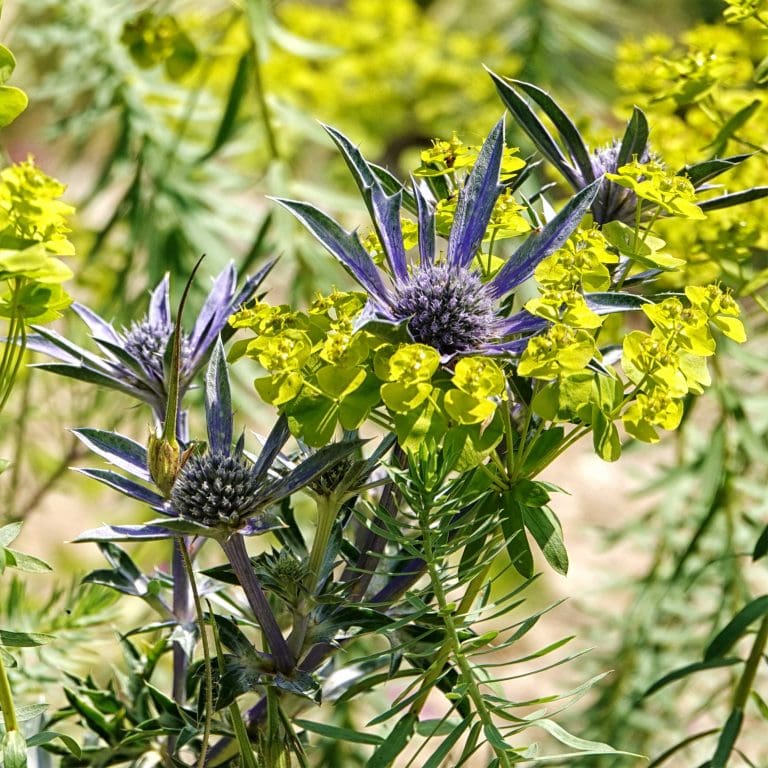
Eryngiums and Euphorbias. Photo: Adrian Thomas
What to grow: Eryngiums and Euphorbias
The Swift Garden featured an area of dry planting where Lilly and Coralie combined these two plants to eye-catching effect.
Eryngiums
- There are several species of Eryngium – commonly called sea-holly – you can grow in UK gardens, most with attractively bluish spiky leaves and flowerheads.
- Most are excellent for pollinators.
- They include the native Sea-holly Eryngium maritinum, found in sand dunes, but the Swift Garden featured Eryngium bourgatii from southern Europe (pictured left).
- Almost all Eryngiums love free-draining soil and lots of sun.
Euphorbias
- Euphorbias – commonly called spurge – form a very large family, with several species native to the UK.
- The flowers are shaped like a cup containing the male and female parts. They are often acid green.
- They include the Wood Spurge Euphorbia amygdaloides, which is great for shady areas, but avoid the invasive cultivar called robbiae.
- For wetter areas, try the European species Marsh Spurge Euphorbia palustris, enjoyed by pollinators.
- Handle spurges using gloves, long sleeves and goggles, as the sap can cause skin and eye irritation.
Spotlight on: skipper butterflies
When I visited the Swift Garden, I was astonished to see the flowerbeds already bobbing with bumblebees and butterflies, despite having been in place only a few days. There were Gatekeeper and Marbled White butterflies, and several of this little butterfly (pictured below), the Essex Skipper.
There are eight species of skipper in the UK – only the Dingy is found in Northern Ireland. In Great Britain, only the Large, Small and Essex are regular in gardens, and only if you have meadowy areas. They are small, golden butterflies that sometimes hold their four triangular wings open like the pages of a book. The Large has the widest distribution, extending north into southern Scotland.
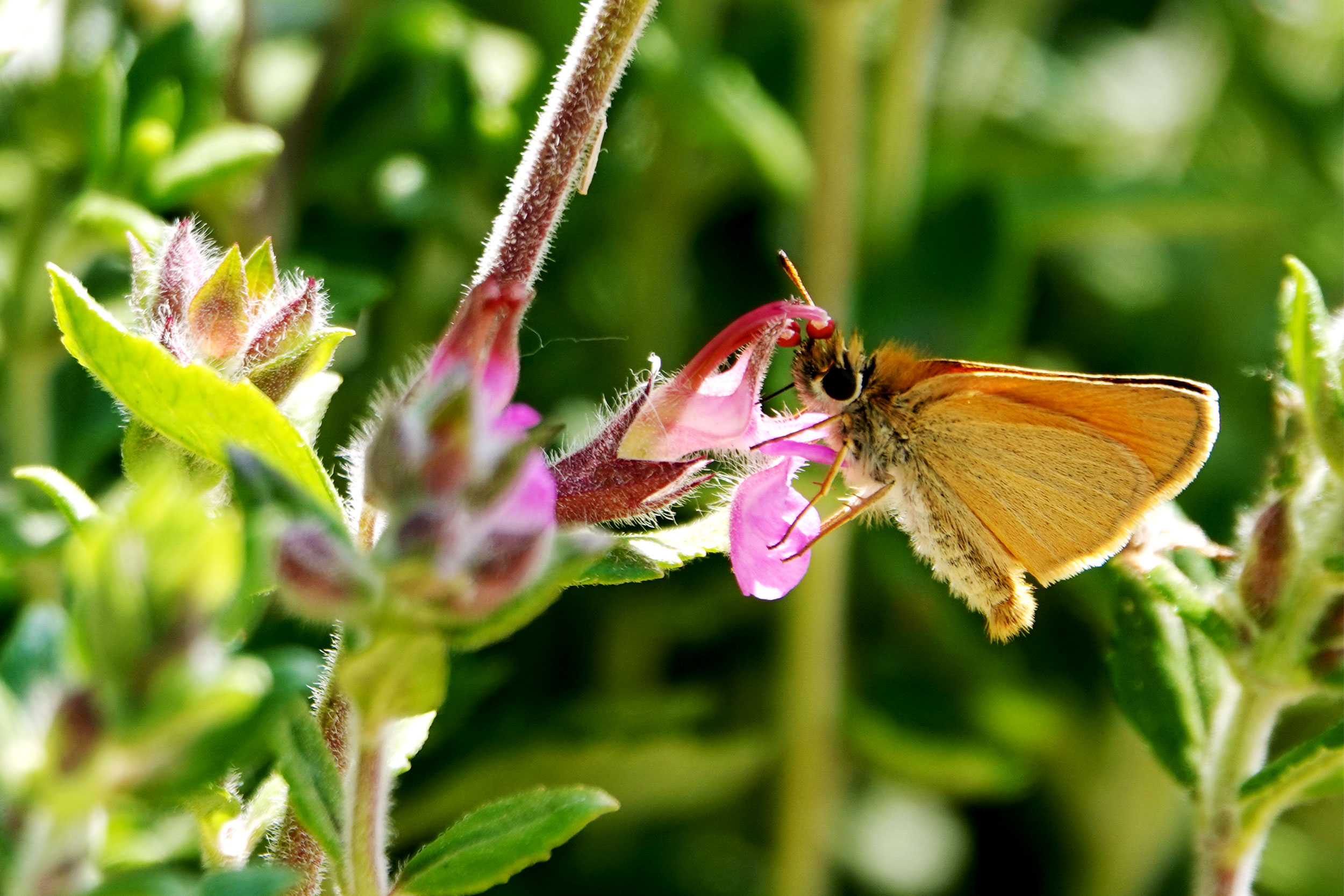
Essex Skipper butterfly. Photo: Adrian Thomas
Your letters
Total transformation!
When we moved to our house in 2008, the tennis-court sized garden had a monochrome grass lawn and low-maintenance evergreens. It was sterile and silent, with not a bird in sight.
So, we set to work. We replaced the solid wall of leylandii down one side with a mixed hedge of Hawthorn, Field Maple and Hornbeam. For year-round colour we added roses, hydrangeas, fuchsias, periwinkles, lavenders and many more. In shady areas we planted Stinking Iris, Nettle and hellebores. We replaced the lawn with a wildflower mix, and it is now a wildlife-rich haven. We allowed Ivy to climb the house. Finally, this being Somerset, we added an apple tree and, as a nod to the changing climate, an Olive.
It took a while. But the garden is now full of birds year-round. There is a constant late-summer flow of Blue, Great, Coal and Long-tailed Tits; autumn brings Goldfinches, Chaffinches and a steadily growing number of visiting Greenfinches. Blackcaps visit in summer, Starlings probe the lawn in winter, and Siskins pass through in early spring – last year I ringed 216 in just over two weeks.
Tawny Owls hoot at night, pipistrelle bats emerge from the bat box each summer evening, and a Hedgehog wanders in and out of the garden through the hole in the fence.
A host of bumblebees flit among the lavender and Red Admirals hover over the buddleia.
Dr Alison Morgan
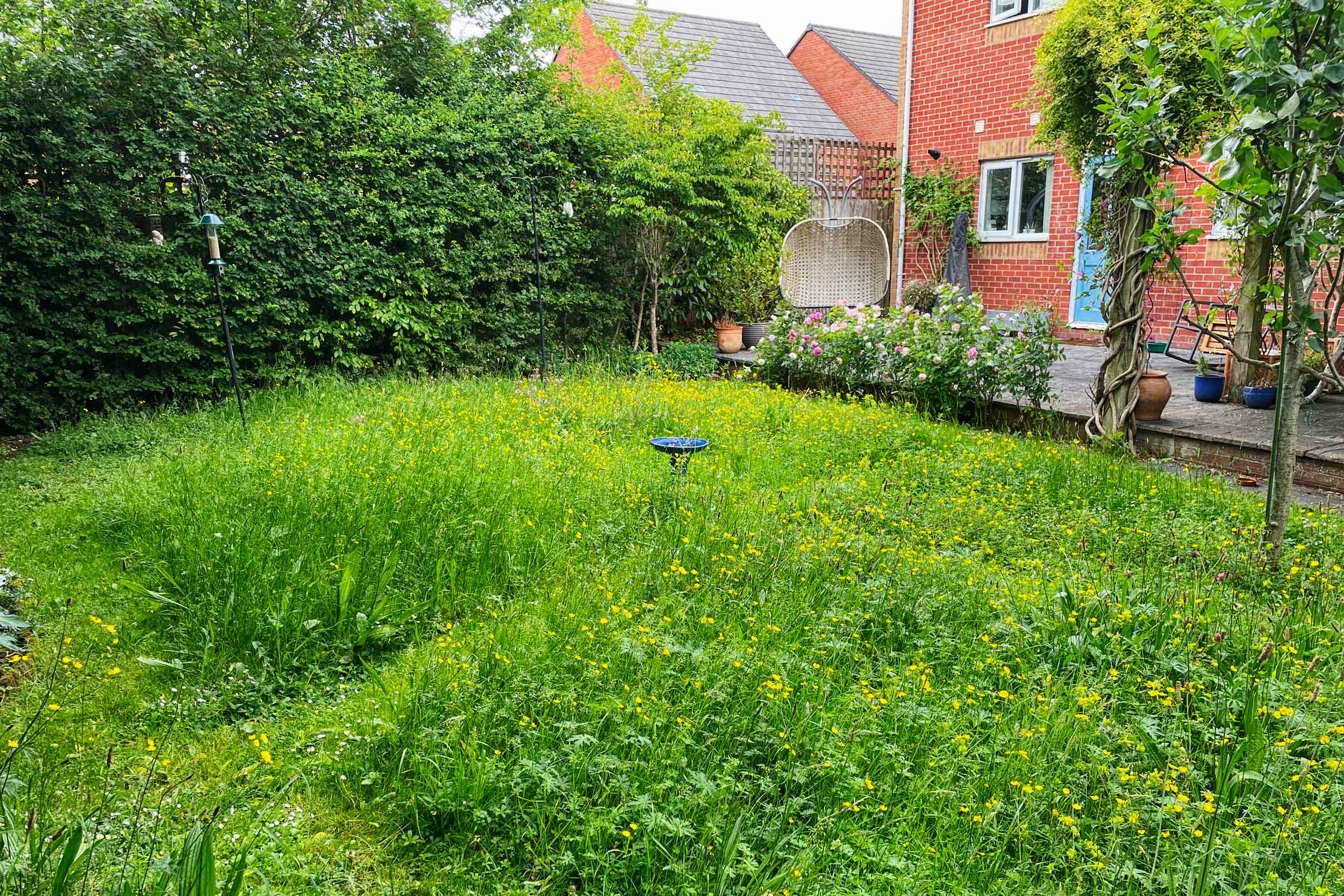
Alison’s wild garden has been a haven for all sorts of wildlife. Photo: Alison Morgan
Be RazzleBEEdazzled
Buy fabulous roses in the new Power to Pollinators range from the RSPB and Harkness Roses, with £5 from each sale going to the RSPB’s latest conservation work. The star of the collection is called RazzleBEEdazzle, but there are other roses to choose from, too.
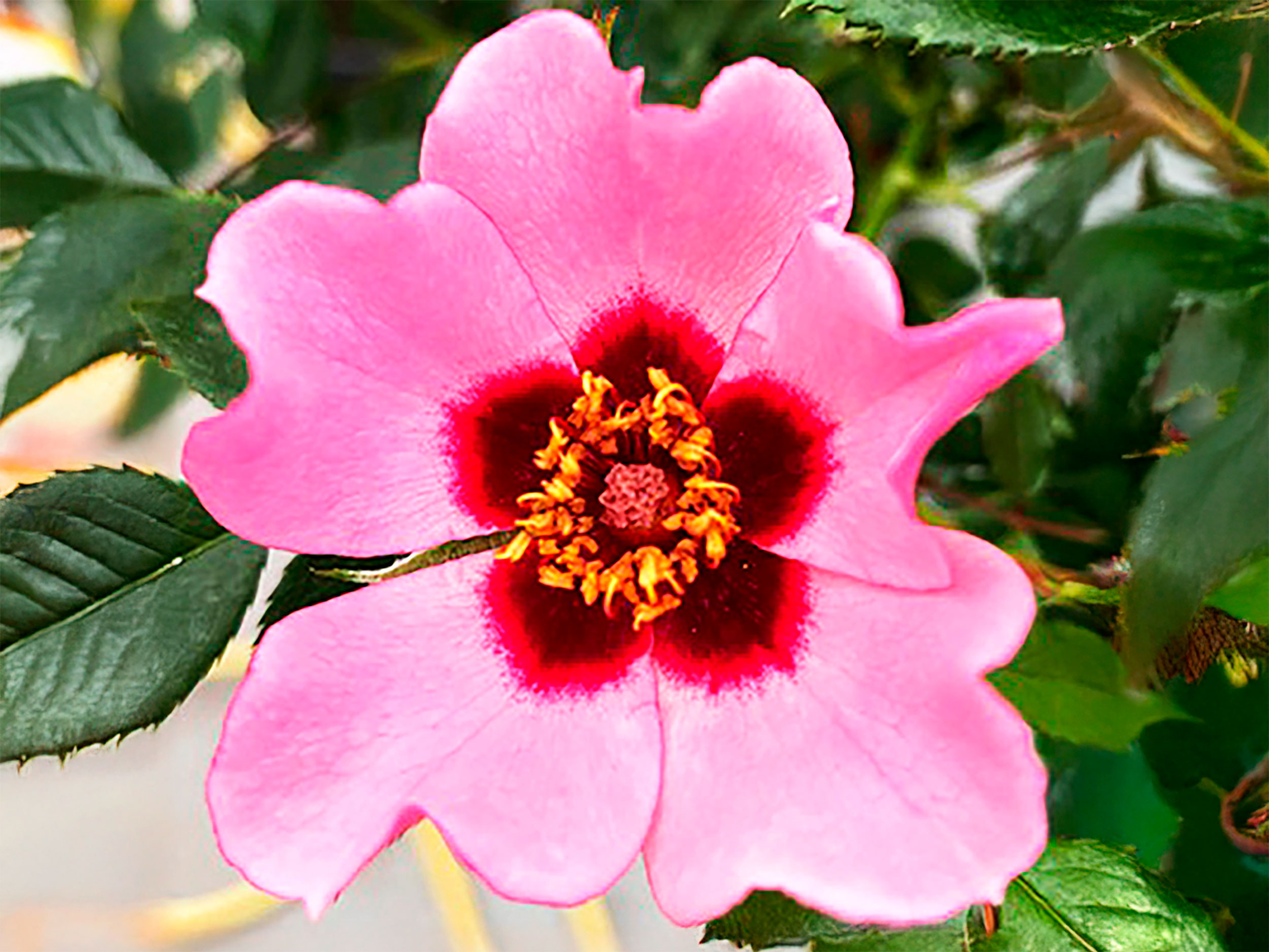
This Morning Rose. Photo: Adrian Thomas
If you have a space you have transformed with wildlife in mind, please tell us about it at rspbmagazine@rspb.org.uk
You might also like
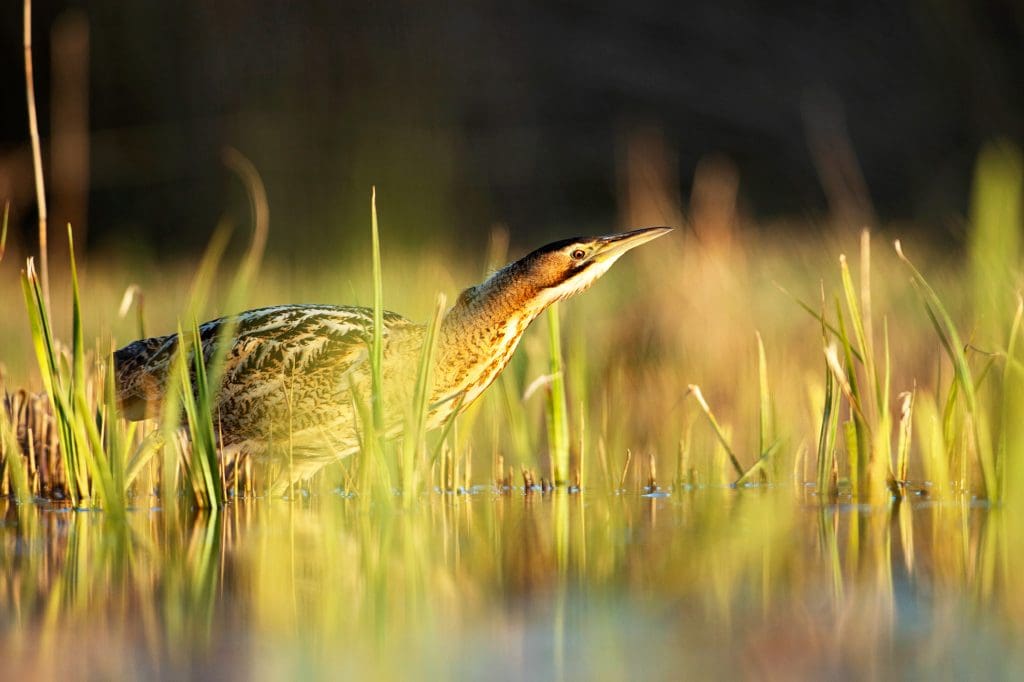
Answering your photography questions
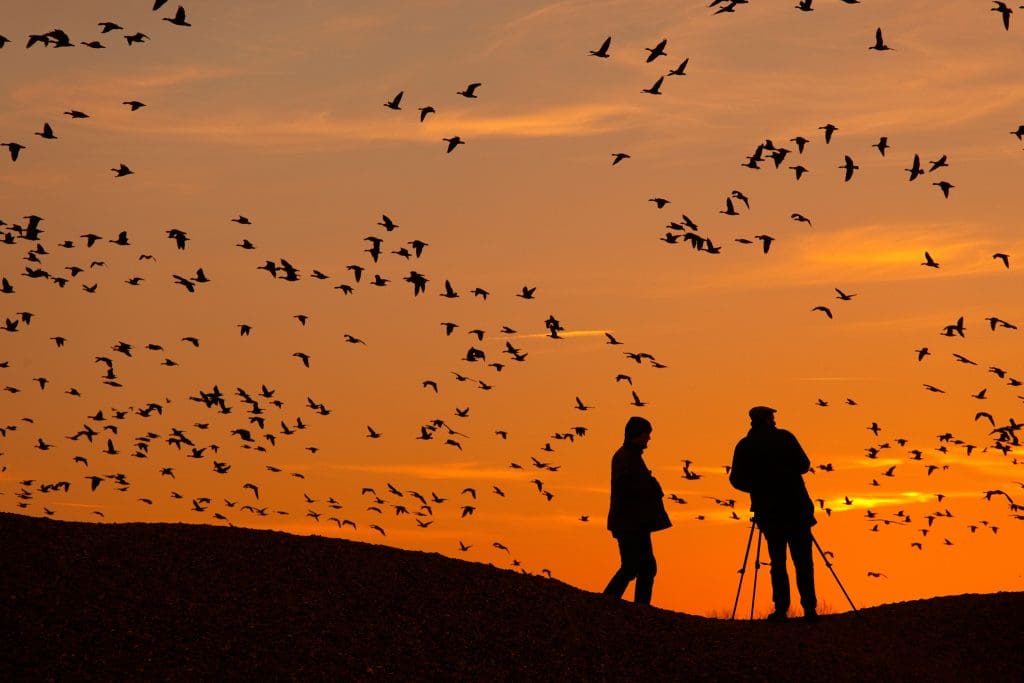
The many-winged UK winter
